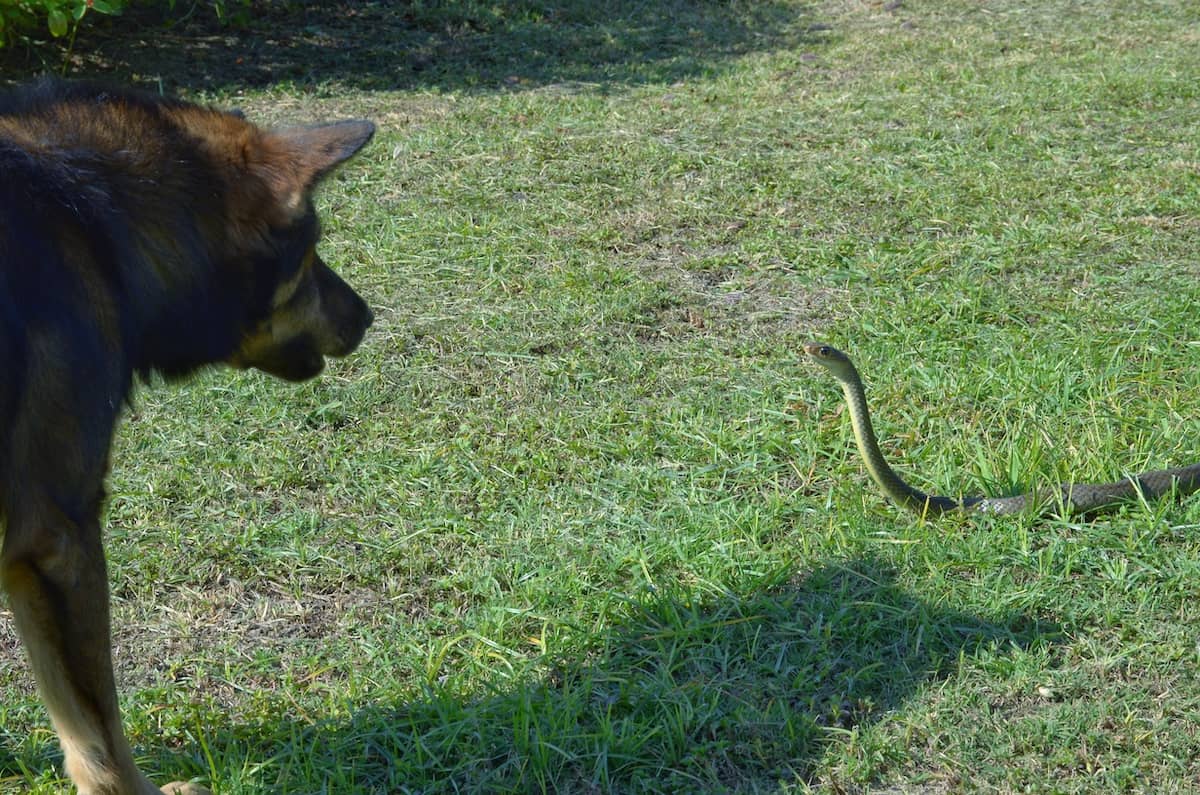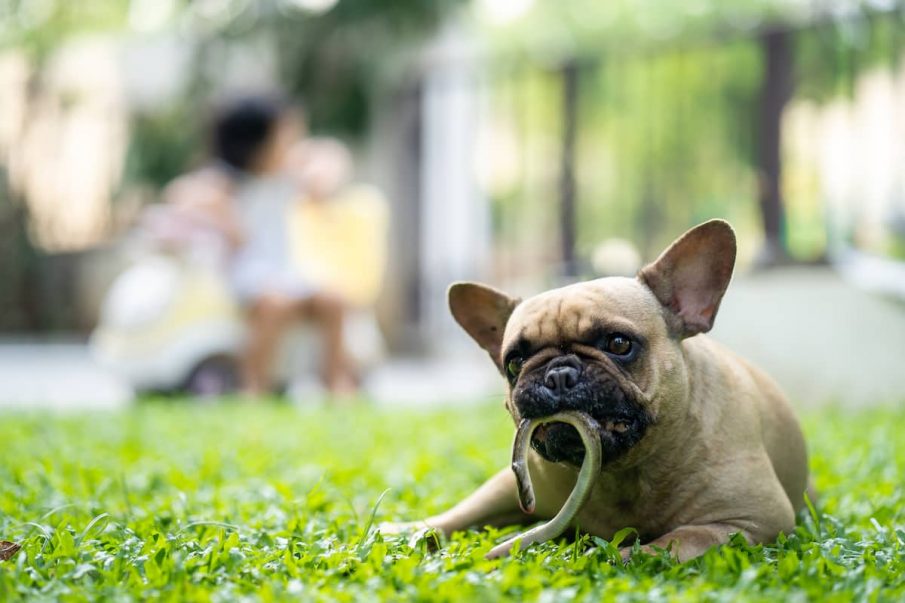As devoted pet owners, we often find ourselves questioning the safety of various foods for our furry friends. While the list of dog-friendly treats is well-established, the curiosity about unconventional snacks remains.
One such intriguing inquiry that has recently surfaced is whether dogs can safely consume snake skin. It’s a question that might leave you scratching your head, wondering if this peculiar reptilian offering poses any risks or if it could potentially be a novel addition to your canine companion’s diet.
In this article, we delve into the world of dogs and snake skin, exploring the potential benefits and risks to help you make an informed decision about this unusual treat for your four-legged friend.
Why Do Dogs Eat Snake Skin?
Dogs are curious animals that like to explore their environment with their mouths. They may chew on anything that catches their attention, including snake skin. Some dogs may find snake skin appealing because of its smell, texture, or taste.
Others may eat snake skin out of boredom, hunger, or stress. Some dogs may also have a natural instinct to hunt and kill snakes, and eating their skin is a way of displaying their dominance.
What Are The Risks Of Eating Snake Skin?
Eating snake skin may not cause any problems for your dog, but it could also pose some risks, depending on the type and amount of snake skin they consume. Some of the potential dangers of eating snake skin are:
- Choking: If your dog swallows a large piece of snake skin without chewing it properly, it could get stuck in their throat and cause choking. This could be life-threatening and require immediate veterinary attention.
- Intestinal obstruction: If your dog eats a lot of snake skin, it could form a blockage in their intestines and prevent the passage of food and waste. This could cause vomiting, diarrhoea, loss of appetite, lethargy, and abdominal pain. If left untreated, it could lead to dehydration, infection, and even death.
- Poisoning: If your dog eats the skin of a venomous snake, they could ingest some of the venom and suffer from poisoning. The symptoms of snake venom poisoning include drooling, swelling, bleeding, difficulty breathing, muscle tremors, seizures, and coma. The severity of the poisoning depends on the type and amount of venom, the size and health of your dog, and the time elapsed since the ingestion. Snake venom poisoning is a medical emergency and requires immediate antivenom treatment.
- Infection: If your dog eats the skin of a dead snake, they could be exposed to bacteria, parasites, or toxins that could cause infection. The symptoms of infection include fever, inflammation, pus, redness, and pain.
The infection could spread to other parts of your dog’s body and cause serious complications. Infection can be treated with antibiotics, anti-inflammatory drugs, and wound care.
Read More: Can Dogs Eat Black Pudding?
How to Prevent a Dog From Eating Snake Skin?
The best way to prevent your dog from eating snake skin is to keep them away from areas where snakes are likely to be found, such as woods, fields, or ponds. You should also supervise your dogs when they are outdoors and keep them on a leash or in a fenced area.
If you see your dog chewing on something suspicious, you should check their mouth and remove any foreign objects. You can also provide your dog with safe and appropriate chew toys or treats to satisfy their chewing needs and prevent boredom or anxiety.
Additionally, you should feed your dog a balanced and complete diet and consult your veterinarian if you suspect any nutritional deficiency or medical condition that may cause your dog to eat non-food items.

What to Do If a Dog Eats a Dead Snake or a Venomous Snake?
If your dog eats a dead snake or a venomous snake, you should act quickly and follow these steps:
- Identify the snake if possible. You can take a picture of the snake or its skin and show it to your veterinarian or a local wildlife expert. This can help determine the type and severity of the venom and the appropriate treatment.
- Call your veterinarian or an emergency animal clinic and explain the situation. They can advise you on what to do next and prepare for your arrival.
- Do not try to suck out the venom or apply a tourniquet. These methods are ineffective and can cause more harm than good.
- Keep your dog calm and comfortable. Avoid any unnecessary movement or stress that can increase the circulation of the venom. Keep your dog warm and hydrated and monitor their breathing and pulse.
- Transport your dog to the nearest veterinary facility as soon as possible. The sooner your dog receives medical attention, the better their chances of survival and recovery.
Well, That’s a Wrap
In conclusion, the question of whether dogs can eat snake skin is met with a nuanced perspective. While snake skin itself isn’t toxic and may offer some nutritional benefits, it’s crucial to consider potential risks such as parasites or contamination.
As responsible pet owners, it’s essential to consult with your veterinarian before introducing unconventional treats into your dog’s diet. Always prioritize your furry friend’s health and well-being, making informed choices to ensure a happy and thriving companion.






